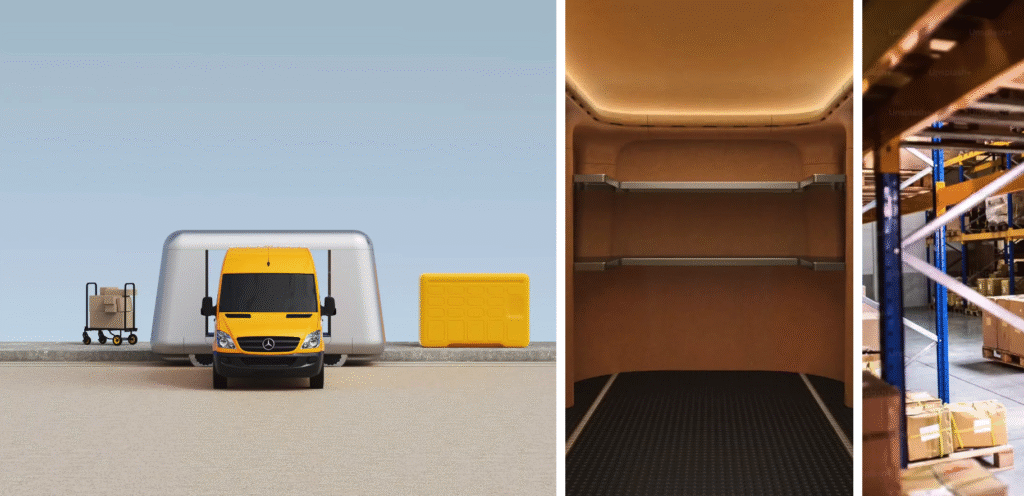At a simple, basic level it sounds appealing.
Packages cannot be delivered efficiently in congested cities, so use less congested tram tracks instead.
Add a the appeal of autonomous vehicles, a bit of AI, and a sprinkling of blockchain, bundle it up with some nice neat renderings, and you will have investors and the railway trade press salivating. So was the case with today’s article in Railway Gazette about a company called Fragile, and their autonomous delivery pods.

But there is a problem with the basic argument here.
People have feet, and packages do not.
What? Jon, you’ve lost it you’re probably thinking. But bear with me.
A typical passenger trip on a tram goes like this:
Walk to the tram stop
⬇
Take the tram
⬇
Walk to your destination
And tram stops are spaced at – give or take – 400m distance from each other for this reason. Pedestrians can handle 200m before and after the tram ride easily enough.
But were package delivery to happen directly from a tram stop, the distance from stop to delivery address is going to be too far – good luck pushing your Amazon deliveries 200m on a trolley! So you are going to need something else for the last bit – a van, a cargo bike maybe. Every change of mode is going to drive up your costs, and drive down the economic viability of your delivery model. Or your delivery tram pods stop more often than passenger trams – but then you’re going to have to unload them ultra quickly to not mess up the passenger tram traffic, which means you’re going to need to automate that too, which will drive up your costs. And once again we’re back where we started. No economic case.
And – thinking further – is it the delivery vans of DHL, UPS and the like that are directly clogging up cities because there are so many of them?
Perhaps a bit, but that’s not the main issue.
The biggest headache is the delivery vans have nowhere to wait a few minutes while delivering, as there is nowhere to park – because all the parking spaces are clogged up with cars parked more than 90% of the time. Clear away some of that, make more short term parking for deliveries, get your car drivers to take trams to go to work, and use car shares for the occasional trips (so reducing private car ownership) and – ta da! – you sort out your delivery vans congestion problem. And as a delivery van has lots of short hops, will not go more than 100km a day, and return to a depot at the end of a round, these vans are about the easiest commercial vehicles to replace diesel with battery electric.
So if you want to sort out the congestion in cities caused by delivery vans, make dedicated short term parking for delivery vans, drive down private car ownership, and drive up the modal share for passengers on regular trams. No autonomous pods required.
